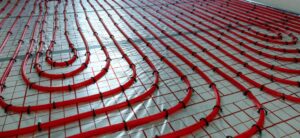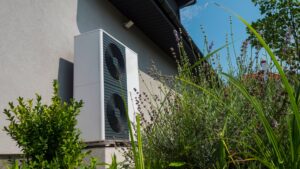When homeowners look at potential heating options for their homes, the choices often come down to two: forced-air or radiant heat. Both offer different heating styles and the installation, general costs, and maintenance that come with it. How do you choose if you’re a homeowner considering new heating options for your new build or remodel?
How Radiant Heat Works Compared to Forced Air
Forced air is a system similar to how it sounds: units use air to heat a space, typically through central heating and built-in ductwork. The furnace is in a central location or a basement, and common models burn natural gas to produce the heat that warms the air (there are also electric furnace options).
Radiant heat relies on touch to transfer energy, and the heat is produced by electricity, hot water, or air. Direct touch transfers the heat to people and objects in a room via infrared radiation and is most effective when installed underneath a floor. The heat runs through cables installed in a uniform pattern.
Pros and Cons of Forced Air
These systems promote good circulation by moving air throughout the house, and they use an HVAC system that can both heat and cool with the installation of air conditioning. The constant circulation can improve air quality if the filter is changed regularly. (If the filter is not changed regularly, it can aggravate sinuses and those with sensitive allergies.)
The biggest downside is that these systems are prone to significant heat loss. Since the air has to travel through so many ducts and pathways, there’s ample opportunity to lose that precious heat along the way.
Pros and Cons of Radiant Heat
Radiant heat uses the efficient science of rising heat. It can add supplemental heat to cover rooms and runs quietly while using substantially less energy. The heating tends to be much more uniform and even with less loss opportunity than forced air.
The upfront cost of radiant heat is higher, and it does only provide heat, but over time that cost is mitigated by the energy savings.
Call the professionals at The Earth Heating today if you have more questions about the comparisons between forced air and radiant heat. Portland-area homeowners have trusted the company for more than a decade with their heating needs. Call (503) 788-7777 to learn more.



